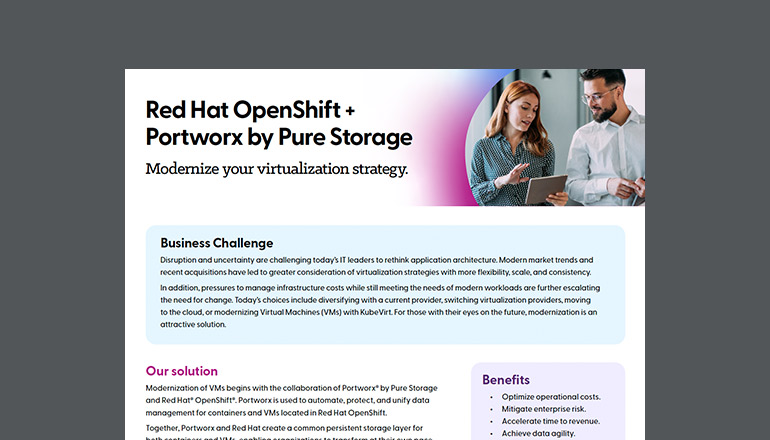Blog Want to Get Into the AI Game but Don't Know Where to Start?
By Carmen Taglienti / 20 Oct 2022

Artificial Intelligence (AI) is one of the most transformative technologies available to modern businesses across industries, driving a great deal of the technological change we are witnessing in today’s world. Voice assistants, manufacturing robots, spam filters — AI is everywhere and constantly evolving. Plus, it offers exponential benefits to businesses looking to gain an edge on the competition, increase operational efficiency and enhance customer value.
It’s no wonder that more businesses are looking to get into the AI game. But in order to reap the harvest of AI’s potential benefits, you might be surprised to hear that the journey doesn’t start with data at all — it starts with your challenge. Here’s how to take a thoughtful approach to becoming AI enabled.
First, identify your business problem.
AI is not one-size-fits-all. There are countless AI solutions and approaches out there. And in order to identify the proper AI solution for your business, it’s necessary to focus on where your pain is so that you can realize the benefits you desire for your business.
Instead of wondering “How do I become AI enabled?”, you must first consider “What are our biggest business challenges?” In other words, what is your purpose for becoming AI enabled?
This is important because if your business becomes AI enabled merely for the sake of being AI enabled, your AI initiatives are likely to miss the mark.
Then, you need data.
Once you have identified your business problems and the impact you can realize, consider what data informs those problems. Almost every business problem requires some collection of data or assessment of information in order to be addressed.
In this way, the question of becoming AI enabled is really a question of becoming a data-driven organization. When AI implementation is informed by actual information that your business collects or has available, your business positions itself to accelerate time to value, drive operational efficiencies and gain a distinct competitive advantage.
Here’s an example of how this can work
We worked with a client in healthcare that performed complex back surgeries. One of the issues this client faced was that 50% of these back surferies were failures — as a result, second surgeries were necessary to successfully repair patients’ back injuries. The need for redo surgeries was certainly unacceptable from the patient’s side, but also from the doctor's side because it meant more time in the hospital, increased risk of scar tissue, future complications and more.
We knew that the answer to this dilemma was hiding somewhere in the data. But healthcare facilities generate and store extensive amounts of data every day. Where was the best place to start?
We started with the operating room (OR). Why? Because the OR was where this “business problem” (failed surgeries) continued to present itself. Using AI, we gathered real-time data from the OR during surgeries, then assessed that data for patterns.
First, we looked at the successful surgeries and worked to identify the data patterns associated with those operations. Then, we examined the surgeries that were not successful and their associated patterns. By analyzing the data patterns associated with successful surgeries, versus those associated with unsuccessful surgeries, we were able to determine their differentiating factors and where improvements could be made to the various processes that occurred in the OR.
The power of feedback loops
From there, we were able to consider what factors outside of the OR could be impacting these surgeries’ outcomes. One such factor was the patient’s health. We then added data pertaining to these outside factors into the folds of our AI data analysis. We used a feedback loop within the AI model — an application of machine learning (ML) techniques — to measure if certain actions led to improvement and helped achieve our desired outcome (a successful surgery).
This concept of using a feedback loop within the AI model initially allowed our client to make marginal improvements to their surgery success rate. As more data continues to be gathered and analyzed through the AI model over time, the client will be able to pinpoint and implement even more impactful improvements to their surgeries.
What's the difference between AI and ML?
It's not unusual to confuse AI and ML given their topical overlap. AI provides the foundation for ML; AI refers to a machine's capacity to complete tasks using its own intelligence. ML is an application of AI focused on a straightforward goal. We want a machine to learn, and to give that machine access to a particular data set and for the machine to learn from that data set by itself. Think of it this way: if AI is a car, then ML is the engine that powers AI forward.
Some resources to help you get started
If your business has a problem, data-backed AI could be your solution. That said, taking your business to the next level and starting your AI journey can be overwhelming. Fortunately, there are plenty of resources to help guide you toward success. Here are a few favorites:
- Watch this video: Considerations for Getting Started With Data & AI Transformation
- Read this blog: The 5 Stages of AI Adoption: How to Sustain Momentum at Every Level




